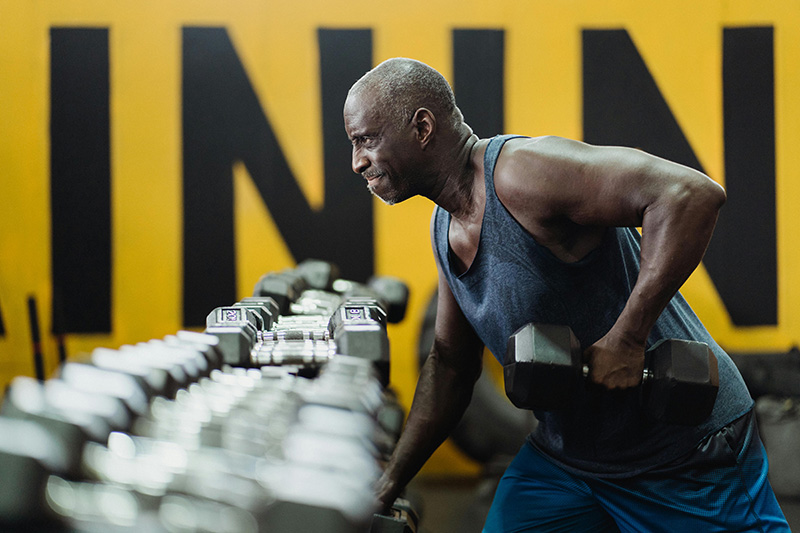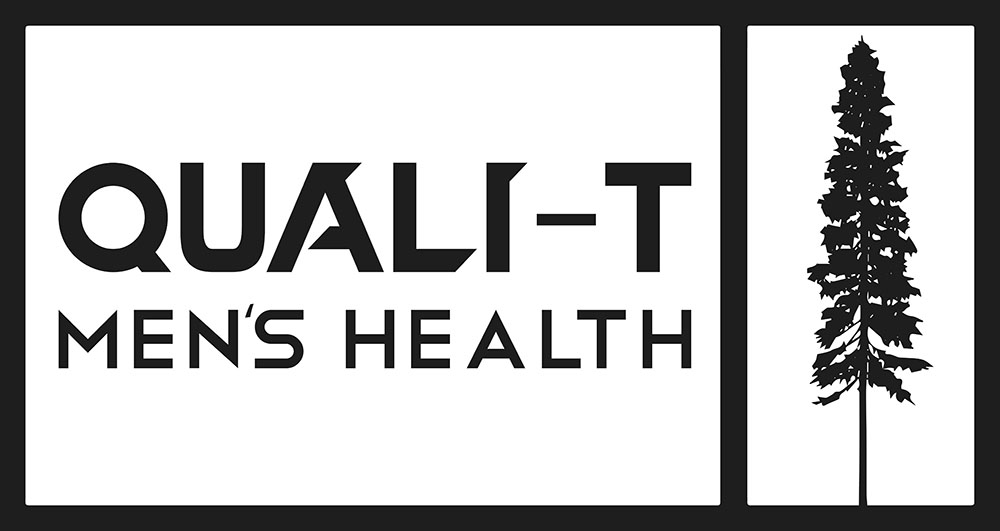
Introduction
Loss of muscle mass, or sarcopenia, is a significant concern, particularly in aging men and individuals with certain medical conditions. Testosterone replacement therapy (TRT) has been explored as a potential treatment to counteract muscle wasting and improve overall muscle function. This literature review examines the effects of TRT on muscle mass, drawing on various studies to provide a comprehensive understanding of its efficacy and underlying mechanisms.
Effects of TRT on Muscle Mass
TRT aims to restore serum testosterone levels typically to the high normal physiological range, thereby addressing symptoms of testosterone deficiency, including muscle loss (1). Several studies have demonstrated that TRT can significantly increase lean body mass and muscle strength in different populations.
-
- General Population and Aging Men:
- A study on nonobese aging men showed that TRT increased total body fat-free mass (FFM – muscle) and skeletal muscle mass while preventing thigh skeletal muscle loss and reducing visceral fat (organ fat) accumulation (5). This suggests that TRT can effectively counteract age-related muscle wasting.
- Long-term TRT in elderly men with subnormal testosterone levels increased muscle mass by decreasing protein breakdown through the ubiquitin-proteasome pathway, mediated by a sustained suppression of SMAD-signaling and muscle-specific E3-ubiquitin ligases (8). This is all to say that long term TRT use supports long term muscle and bone health.
- Men with Specific Medical Conditions:
- In men with heart failure and testosterone deficiency, combined TRT and exercise training significantly improved muscle sympathetic nerve activity, muscle wasting, and functional capacity compared to isolated therapies (4).
- For glucocorticoid-treated men, TRT reversed the deleterious effects of glucocorticoid drugs on skeletal and soft tissues, including a gain in lean body mass and a reduction in body fat mass (2).
- HIV-Infected Individuals:
- In HIV-infected men with low testosterone levels, TRT was associated with a significant increase in lean body mass and a reduction in fat mass, although there was no significant change in overall body weight (3).
- General Population and Aging Men:
Mechanisms of Action
The molecular mechanisms by which TRT affects muscle mass involve several pathways:
- Protein Synthesis and Breakdown: TRT has been shown to decrease protein breakdown through the ubiquitin-proteasome pathway by reducing the expression of muscle-specific E3-ubiquitin ligases such as MuRF1 and Atrogin-1/MAFbx (8).
- Hormonal Regulation: TRT increases serum testosterone levels, which in turn influences muscle protein synthesis and reduces muscle protein degradation (1) (5).
Administration Routes and Efficacy
The efficacy of TRT can vary depending on the administration route. A systematic review and meta-analysis found that different routes of TRT administration (e.g., transdermal, intramuscular) can lead to inconsistent responses in FFM and muscle strength (9). This highlights the importance of selecting an appropriate administration method to maximize the therapeutic benefits of TRT. We at Quali-T Men’s Health in Salem only use the best routes for maximum symptom resolution.
Conclusion
TRT has been shown to be effective in increasing muscle mass and improving muscle function in various populations, including aging men and individuals with specific medical conditions. The underlying mechanisms involve the regulation of protein synthesis and breakdown, mediated by hormonal changes. However, the efficacy of TRT can vary based on the administration route and individual patient characteristics. Come see how Quali-T Men’s Health can optimize your TRT protocols and reap the rewards of its long-term effects on muscle health!
References
- Barbonetti, A., D’Andrea, S., & Francavilla, S. (2020). Testosterone replacement therapy. Andrology, 8, 1551 – 1566. https://doi.org/10.1111/andr.12774.
- Reid, I., Wattie, D., Evans, M., & Stapleton, J. (1996). Testosterone therapy in glucocorticoid-treated men.. JAMA Internal Medicine, 156, 1173-1177. https://doi.org/10.1001/ARCHINTE.1996.00440100065008.
- Bhasin, S., Storer, T., Storer, T., Asbel-Sethi, N., Kilbourne, A., Hays, R., Sinha‐Hikim, I., Shen, R., Arver, S., & Beall, G. (1998). Effects of testosterone replacement with a nongenital, transdermal system, Androderm, in human immunodeficiency virus-infected men with low testosterone levels.. The Journal of clinical endocrinology and metabolism, 83 9, 3155-62 . https://doi.org/10.1210/JCEM.83.9.5079.
- Santos, M., Sayegh, A., Bacurau, A., Arap, M., Brum, P., Pereira, R., Takayama, L., Barretto, A., Negrão, C., & Alves, M. (2016). Effect of Exercise Training and Testosterone Replacement on Skeletal Muscle Wasting in Patients With Heart Failure With Testosterone Deficiency.. Mayo Clinic proceedings, 91 5, 575-86 . https://doi.org/10.1016/j.mayocp.2016.02.014.
- Allan, C., Strauss, B., Strauss, B., Burger, H., Forbes, E., & McLachlan, R. (2008). Testosterone therapy prevents gain in visceral adipose tissue and loss of skeletal muscle in nonobese aging men.. The Journal of clinical endocrinology and metabolism, 93 1, 139-46 . https://doi.org/10.1210/JC.2007-1291.
- Barnouin, Y., Armamento-Villareal, R., Celli, A., Jiang, B., Paudyal, A., Nambi, V., Bryant, M., Marcelli, M., Garcia, J., Qualls, C., & Villareal, D. (2020). Testosterone Replacement Therapy added to Intensive Lifestyle Intervention in Older Men with Obesity and Hypogonadism.. The Journal of clinical endocrinology and metabolism. https://doi.org/10.1210/clinem/dgaa917.
- Choi, H., Gray, P., Storer, T., Storer, T., Calof, O., Woodhouse, L., Singh, A., Padero, C., Mac, R., Sinha‐Hikim, I., Shen, R., Dzekov, J., Dzekov, C., Dzekov, C., Kushnir, M., Rockwood, A., Meikle, A., Lee, M., Hays, R., & Bhasin, S. (2005). Effects of testosterone replacement in human immunodeficiency virus-infected women with weight loss.. The Journal of clinical endocrinology and metabolism, 90 3, 1531-41 . https://doi.org/10.1210/JC.2004-1677.
- Kruse, R., Petersson, S., Christensen, L., Kristensen, J., Sabaratnam, R., Ørtenblad, N., Andersen, M., & Højlund, K. (2020). Effect of long-term testosterone therapy on molecular regulators of skeletal muscle mass and fibre-type distribution in aging men with subnormal testosterone.. Metabolism: clinical and experimental, 154347 . https://doi.org/10.1016/j.metabol.2020.154347.





